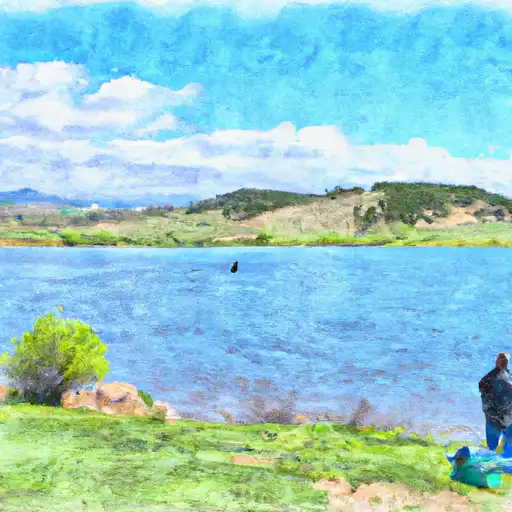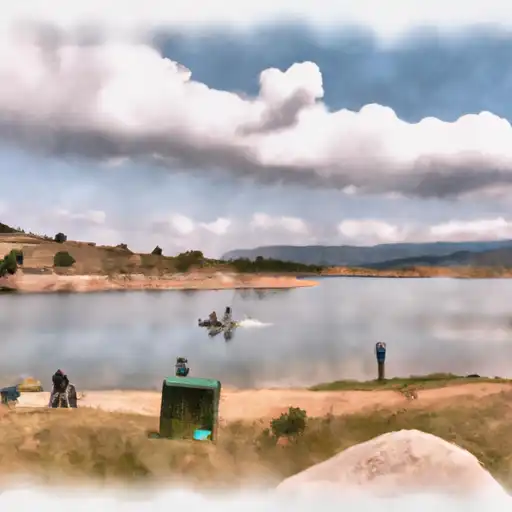Summary
Total streamflow across the
Taylor River
was last observed at
225
cfs, and is expected to yield approximately
446
acre-ft of water today; about 106%
of normal.
Average streamflow for this time of year is
212 cfs,
with recent peaks last observed
on
2015-06-18 when daily discharge volume was observed at
4,625 cfs.
Maximum discharge along the river is currently at the
Taylor River At Almont
reporting a streamflow rate of 146 cfs.
However, the streamgauge with the highest stage along the river is the
Taylor River Below Taylor Park Reservoir
with a gauge stage of 3.37 ft.
This river is monitored from 3 different streamgauging stations along the Taylor River, the highest being situated at an altitude of 9,333 ft, the
Taylor River At Taylor Park.
River Details
| Last Updated | 2025-12-03 |
| Discharge Volume | 446 ACRE-FT |
| Streamflow |
225.1 cfs
+16.0 cfs (+7.65%) |
| Percent of Normal | 106.33% |
| Maximum |
4,625.0 cfs
2015-06-18 |
| Seasonal Avg | 212 cfs |
River Streamflow Levels
| Streamgauge | Streamflow | Gauge Stage | 24hr Change (%) | % Normal | Minimum (cfs) | Maximum (cfs) | Air Temp | Elevation |
|---|---|---|---|---|---|---|---|---|
|
Taylor River At Taylor Park
USGS 09107000 |
43 cfs | 1.46 ft | 0 | |||||
|
Taylor River Below Taylor Park Reservoir
USGS 09109000 |
79 cfs | 3.37 ft | 0 | |||||
|
Taylor River At Almont
USGS 09110000 |
146 cfs | 1.63 ft | 12.31 |
Seasonal Discharge Comparison
Maximum Streamflow Discharge
Streamflow Elevation Profile
The Colorado River is one of the principal rivers (along with the Rio Grande) in the Southwestern United States and northern Mexico. The 1,450-mile-long (2,330 km) river drains an expansive, arid watershed that encompasses parts of seven U.S. and two Mexican states. Starting in the central Rocky Mountains of Colorado, the river flows generally southwest across the Colorado Plateau and through the Grand Canyon before reaching Lake Mead on the Arizona–Nevada border, where it turns south toward the international border. After entering Mexico, the Colorado approaches the mostly dry Colorado River Delta at the tip of the Gulf of California between Baja California and Sonora.
Known for its dramatic canyons, whitewater rapids, and eleven U.S. National Parks, the Colorado River and its tributaries are a vital source of water for 40 million people. The river and its tributaries are controlled by an extensive system of dams, reservoirs, and aqueducts, which in most years divert its entire flow for agricultural irrigation and domestic water supply. Its large flow and steep gradient are used for generating hydroelectric power, and its major dams regulate peaking power demands in much of the Intermountain West. Intensive water consumption has dried up the lower 100 miles (160 km) of the river, which has rarely reached the sea since the 1960s.Beginning with small bands of nomadic hunter-gatherers, Native Americans have inhabited the Colorado River basin for at least 8,000 years. Between 2,000 and 1,000 years ago, the watershed was home to large agricultural civilizations—considered some of the most sophisticated indigenous North American cultures—which eventually declined due to a combination of severe drought and poor land use practices. Most native peoples that inhabit the region today are descended from other groups that settled there beginning about 1,000 years ago. Europeans first entered the Colorado Basin in the 16th century, when explorers from Spain began mapping and claiming the area, which became part of Mexico upon its independence in 1821. Early contact between Europeans and Native Americans was generally limited to the fur trade in the headwaters and sporadic trade interactions along the lower river.
After most of the Colorado River basin became part of the U.S. in 1846, much of the river's course was still the subject of myths and speculation. Several expeditions charted the Colorado in the mid-19th century—one of which, led by John Wesley Powell, was the first to run the rapids of the Grand Canyon. American explorers collected valuable information that was later used to develop the river for navigation and water supply. Large-scale settlement of the lower basin began in the mid- to late-19th century, with steamboats providing transportation from the Gulf of California to landings along the river that linked to wagon roads to the interior. Starting in the 1860s, gold and silver strikes drew prospectors to parts of the upper Colorado River basin.
Large engineering works began around the start of the 20th century, with major guidelines established in a series of international and U.S. interstate treaties known as the "Law of the River". The U.S. federal government was the main driving force behind the construction of dams and aqueducts, although many state and local water agencies were also involved. Most of the major dams were built between 1910 and 1970; the system keystone, Hoover Dam, was completed in 1935. The Colorado is now considered among the most controlled and litigated rivers in the world, with every drop of its water fully allocated.
The environmental movement in the American Southwest has opposed the damming and diversion of the Colorado River system because of detrimental effects on the ecology and natural beauty of the river and its tributaries. During the construction of Glen Canyon Dam, environmental organizations vowed to block any further development of the river, and a number of later dam and aqueduct proposals were defeated by citizen opposition. As demands for Colorado River water continue to rise, the level of human development and control of the river continues to generate controversy.

 The Upper
The Upper
 Spring Creek Reservoir
Spring Creek Reservoir
 Sayer's Gulch Trailhead
Sayer's Gulch Trailhead
 Lost Man Reservoir
Lost Man Reservoir